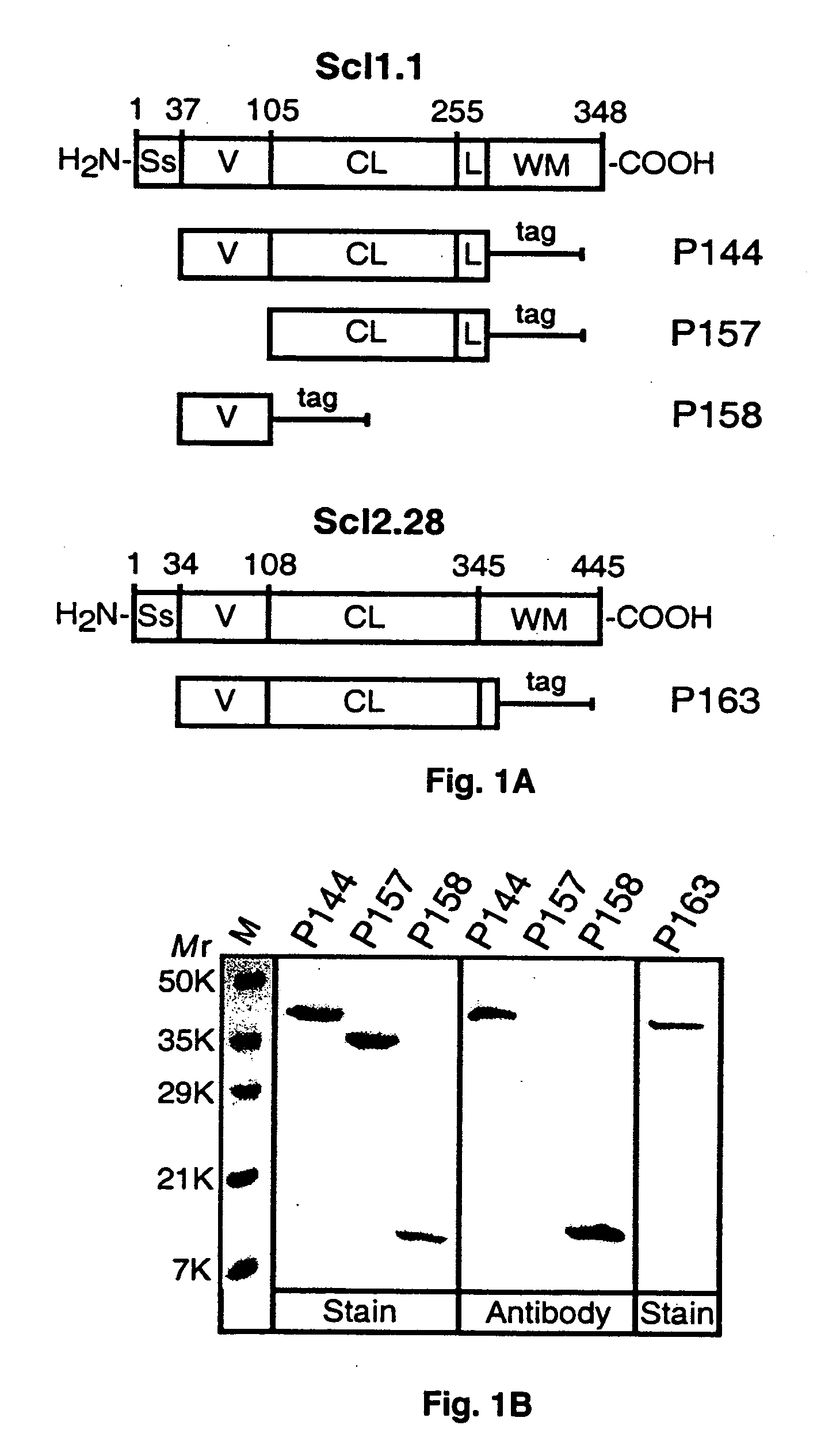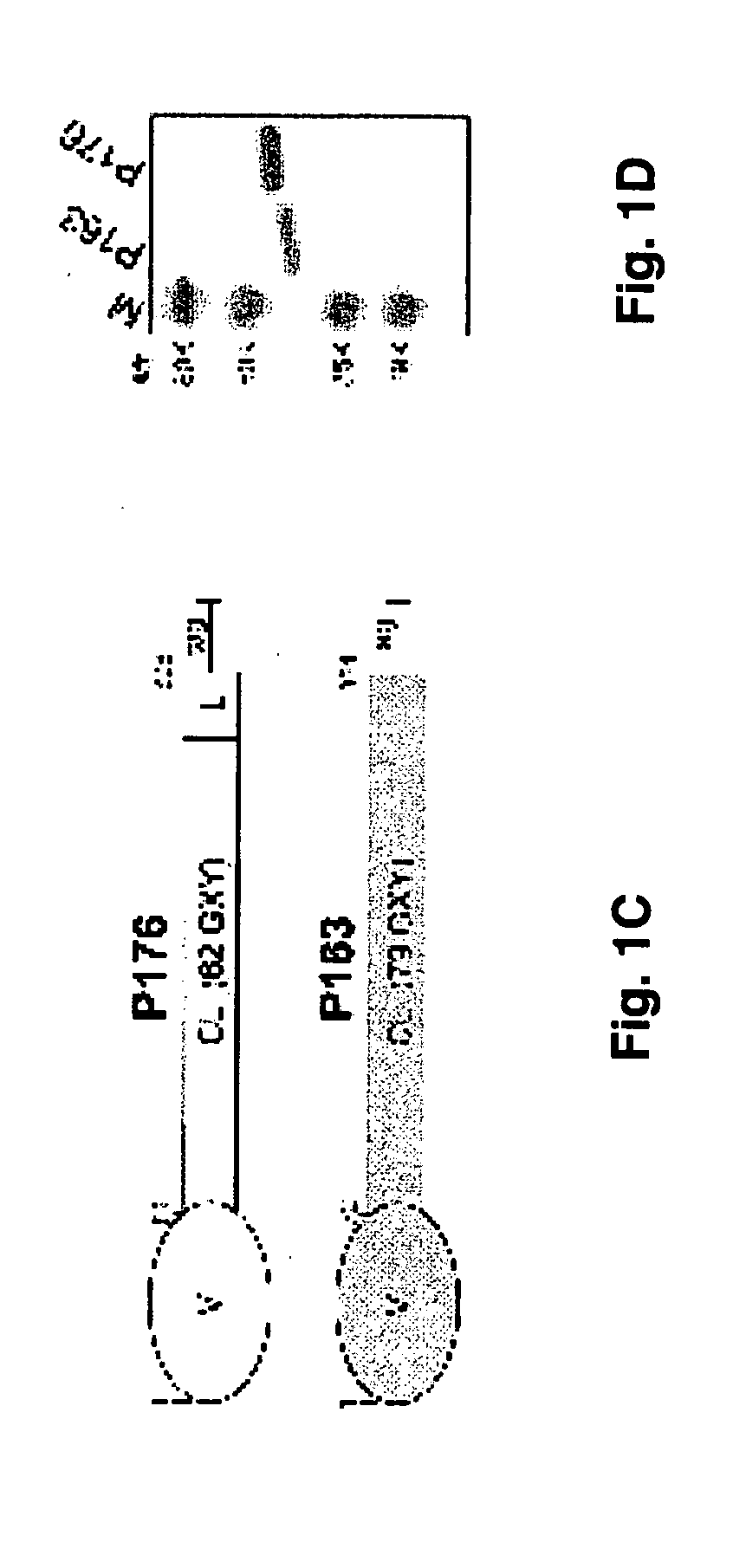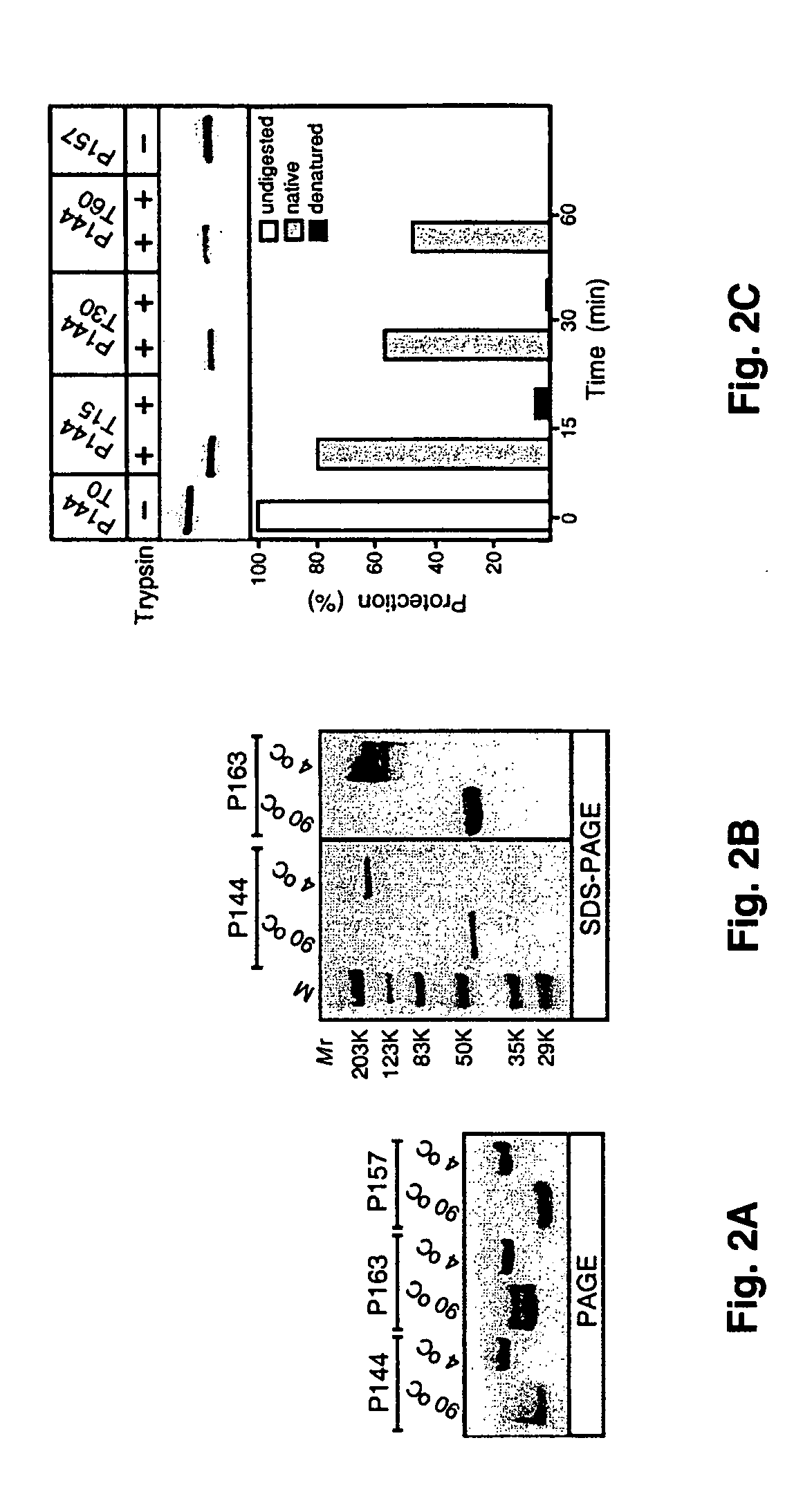Prokaryotic collagen-like proteins and uses thereof
a collagen-like protein, prokaryotic technology, applied in the field of protein molecular biology and microbiology, can solve the problems of not being immediately accessible for interactions, animal protein products can be contaminated by viruses and prions,
- Summary
- Abstract
- Description
- Claims
- Application Information
AI Technical Summary
Benefits of technology
Problems solved by technology
Method used
Image
Examples
example 1
Materials and Methods
[0080] Recombinant Proteins Recombinant proteins were obtained using the Strep-tag II expression and purification system (IBA-GmbH). Fragments encoding sequences of the scl1.1 allele were amplified from the serotype M1 strain MGAS6708 identical to SF370 used for genome sequencing. The scl2.28 sequence was amplified from the serotype M28 strain MGAS6274. DNA fragments were ligated to the Escherichia coli vector pASK-IBA2, and clones were confirmed by sequencing. Recombinant proteins were expressed in E. coli and purified by affinity chromatography on a Strep-Tactin-Sepharose. Thus, pSL163 was constructed which encodes a P163 polypeptide. The identity of each purified protein was confirmed by amino-terminal sequencing, and mass determinations were done by electrospray ionization mass spectrometry measurements.
[0081] Western immunoblot analysis was performed with proteins separated on SDS-PAGE, transferred onto a nitrocellulose membrane (Amersham Biosciences) an...
example 2
Characterization of Recombinant Scl Proteins
[0101] Previous studies demonstrated that recombinant proteins expressed in eukaryotic systems could successfully be used to study the structure and organization of mammalian proteins with collagenous domains. A series of recombinant polypeptides generated in a prokaryotic (E. coli) expression system derived from either the Scl1.1, i.e., a Scl1 protein from a serotype M1 GAS, or the Scl2.28, i.e., a Scl2 protein from a M28-type GAS, protein that contain collagen-like regions composed of continuous GXY repeats was examined (FIG. 1A).
[0102] These two related proteins were selected for structural studies because they were both expressed by the parental GAS isolates and they differed significantly in their primary amino acid sequence. The collagen-like region (CL) is composed of 50 and 79 GXY repeats in Scl1.1 and Scl2.28, respectively. The amino-terminal segment of each protein, called the variable (V) region, is composed of noncollagenous...
example 3
Multimolecular Organization of Scl Proteins
[0106] To assess the ability of Scl1 and Scl2 to assemble into polymeric structures, the electrophoretic mobilities of P144, P157, and P163 in polyacrylamide gel run in the absence of SDS before and after heat denaturation were compared (FIG. 2A). In each case the native samples produced uniform higher molecular mass bands compared with their corresponding samples that were heat-denatured before loading on a gel, results suggesting that all three proteins tested formed oligomers under nondenaturing conditions. The presence of multiple bands in denatured P144 and P163 suggested that these proteins partially renatured while running on a gel.
[0107] In subsequent experiments, the mobility of native and heat-denatured samples of P144 and P163 were compared in SDS-PAGE using molecular mass standards (FIG. 2B). A heat-denatured P144 (Mr=26.8) migrated as a 45-kDa band, whereas the nondenatured sample appeared as a single band with an apparent M...
PUM
| Property | Measurement | Unit |
|---|---|---|
| Biological properties | aaaaa | aaaaa |
Abstract
Description
Claims
Application Information
 Login to View More
Login to View More - R&D
- Intellectual Property
- Life Sciences
- Materials
- Tech Scout
- Unparalleled Data Quality
- Higher Quality Content
- 60% Fewer Hallucinations
Browse by: Latest US Patents, China's latest patents, Technical Efficacy Thesaurus, Application Domain, Technology Topic, Popular Technical Reports.
© 2025 PatSnap. All rights reserved.Legal|Privacy policy|Modern Slavery Act Transparency Statement|Sitemap|About US| Contact US: help@patsnap.com



